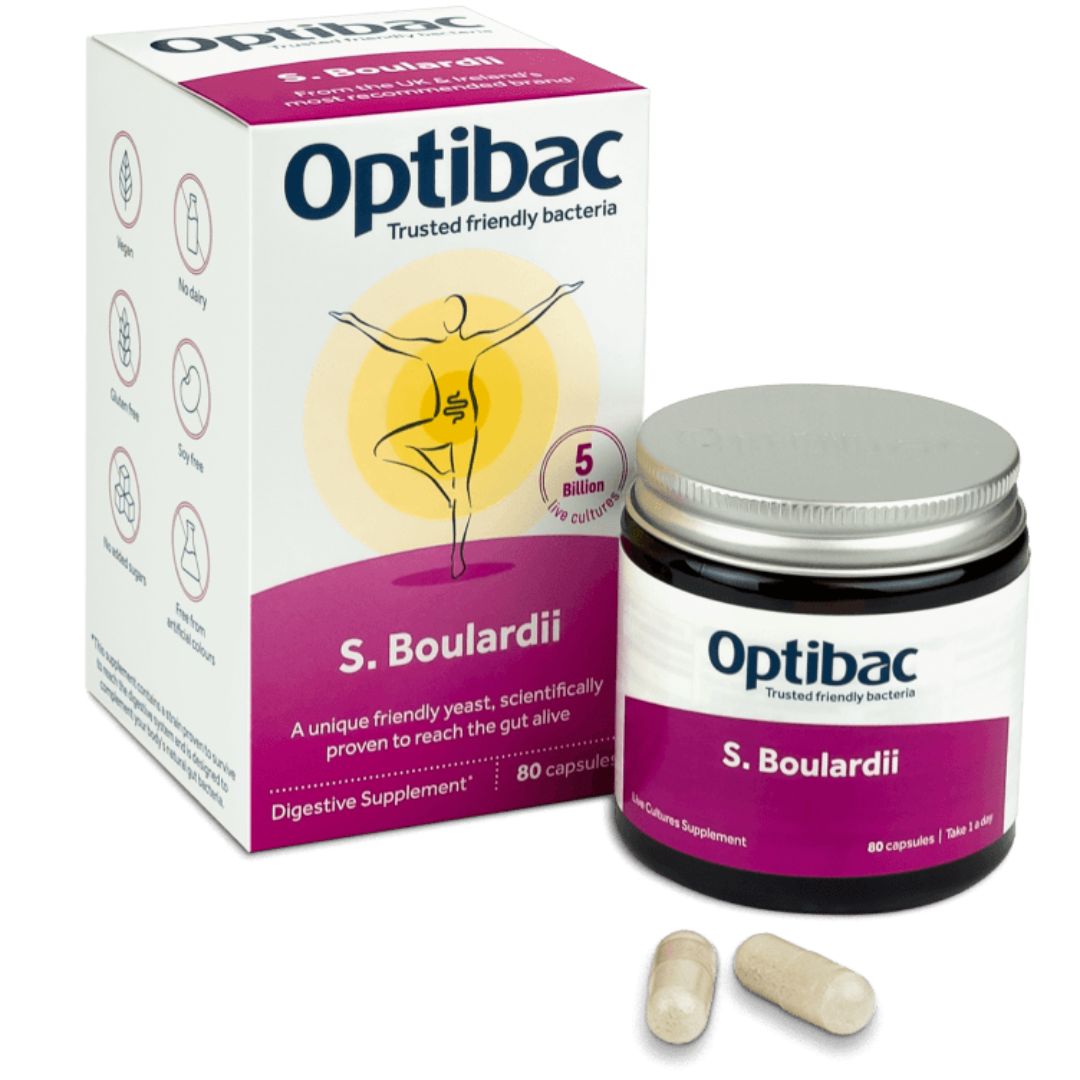What Is Small Intestine Fungal Overgrowth (SIFO)?
SIFO stands for small intestine fungal overgrowth and, as the name suggests, is when there is an overgrowth of fungi, often candida albicans, in the small intestine.
In the past, SIFO was only really diagnosed in HIV-positive patients, during steroid therapy and antibiotic therapy in cancer patients, and in those with poorly managed diabetes. It was thought that it could only occur in those with compromised immune systems.
However, recent studies show that SIFO can affect healthy and immunocompetent individuals and cause unpleasant gastrointestinal complaints (source)
Two recent studies showed that 26% and 25% of participants with unexplained gut symptoms had SIFO!
An important point to understand is that, according to one study, approximately 70% of healthy individuals have Candida albicans in the stomach and small intestine. It’s just there at very low concentrations. (source)
What Are The Symptoms Of SIFO?
The most common symptoms of SIFO observed in patients are:
- Belching.
- Bloating.
- Indigestion.
- Nausea.
- Diarrhoea.
- Gas.
- Fatigue.
- Migraines.
- Depression.
As you can see, it is impossible to know whether you have SIBO or SIFO just from symptoms.
This has been demonstrated in the research: “Symptom profiles were similar between those with or without SIBO/SIFO.” (source)
What Causes Small Intestine Fungal Overgrowth?
Any damage to the mucosal barrier or disruption of gut microbiome with chemotherapy or antibiotic use, inflammatory processes, activation of immune molecules and disruption of epithelial repair may all cause small intestine fungal overgrowth. (source) This could include:
- Compromised small intestine motility.
- Use of proton pump inhibitors.
- Colectomy.
- Ileocecal valve dysfunction.
- High BMI.
- Underlying medical conditions.
- Diabetes mellitus.
- Steroids.
- Immunosuppressant drugs.
- Steroids.
- Antibiotics.
- Patients undergoing transplantation.
- Suboptimal digestion (e.g pancreatic enzyme deficiency)
- The oral contraceptive pill.
The use of oral contraceptives, which alter the glycogen storage content of epithelial cells and can lead to a weakened mucosal barrier, has also been implicated as a cause of Candida-associated diarrhea.
When these participants were tested for motility issues and proton pump inhibitor use (medications that lower stomach acid) 53% patients had dysmotility and 43% used PPI.
It was concluded that:
“PPI use and dysmotility were independent significant risk factors for overgrowth, but together did not pose additional risk.” (source)
Can You Have SIBO and SIFO At The Same Time?
Yes you can, and the research demonstrates it is actually quite common.
In one study, 150 subjects experiencing unexplained gut issues were evaluated for small intestine fungal overgrowth and SIBO. The results were quite alarming:
- 63% had either SIBO or SIFO
- 40% had SIBO
- 26% had small intestine fungal overgrowth
- 34% had mixed SIBO/SIFO.
SIBO was predominately due to Streptococcus, Enterococcus, Klebsiella and E. coli.
Small intestine fungal overgrowth was due to Candida albicans.
How To Test For SIFO
The gold standard test for diagnosing small intestine fungal overgrowth is a small bowel aspirate. This procedure involves inserting a tube down the oesophagus and stomach into the small intestine during an upper endoscopy where a sample will be taken.
Irunary organic acid testing is used by some, specifically D-arabinitol. However it cannot confirm small intestine fungal overgrowth – just that there is a fungal overgrowth. So it can’t identify where the overgrowth is. It could be, for example, in the oral microbiome which is a relatively common site for candida to overgrow.
Historically IgG/IgA/IgM antibodies for Candida have been used. But again, these can only suggest small intestine fungal overgrowth and are perhaps better placed to assess how effective the treatment has been.
Stool testing will also not shed light on whether you have small intestine fungal overgrowth. They are only evaluating the large intestine.
None of them, however, allow a specific diagnosis to be made. (source)
How Do You Treat Small Intestine Fugal Overgrowth?
Treating SIFO is complex and needs to be tailored to each patient. Things that wil influence what treatment looks like include: comorbidities, the severity of the overgrowth, tolerance to antifungals, immune system function, detox capacity, integrity of the gut lining, and and the clients overall clinical stability.
While we have limited evidence around treatment strategies at this point in time, we can be confident in what we know – either from published evidence or from anecdotal experience of clinicians and patients.
Supplements For SIFO
Get 10% off your supplements at Healthpath using code ‘alexmanos10’.
Essential Oils
These include things like oregano oil. Research has clearly shown that these are as effective as antibiotics in treating SIBO, and research has found them as effective as antifingals in eradicating small intestine fungal overgrowth. I have excellent results with the product ADP – an oregano oil extract.
Here’s the findings of one study: “Mint, basil, lavender, tea tree oil, winter savory and oregano essential oils inhibited both the growth and the activity of C. albicans more efficiently than clotrimazole. Damages induced by essential oils at the cellular level were stronger than those caused by clotrimazole“.
Probiotics
Saccharomyces Boulardii, a yeast strain of probiotic, has been demonstrated to be as effective as the anti-fungal drug nystatin. I use this all the time in clients with SIFO/SIBO and other gut related disorders.
Monolaurin
Monolaurin has a potential antifungal activity against C. albicans and can modulate the pro-inflammatory response of the host. (source)
NAC
Although there is no direct research on NAC for small intestine fungal overgrowth, NAC has been shown to have biofilm busting properties on candida albicans, and as already mentioned this is the most common candida to cause small intestine fungal overgrowth.
Bile support
We can support bile with bitters and phosphatidylcholine. These help bile production and flow. Bile has anti-fungal properties and therefore it is important to have a healthy biliary system (liver and gall bladder).
Consider stomach pH
We know that adequate stomach acid is required to help maintain a healthy small intestine. Low stomach acid is a known risk factor for small intestine bacterial overgrowth, and as we have seen above, small intestine fungal overgrowth too. When low we can consider using things like apple cider vinegar, or Betaine Hydrochloride as a way to re-acidify the stomach.
Support motility
If small intestine motility has been compromised then this needs to be addressed too through things like a prokinetic and by avoiding snacks. A prokinetic is a something which supports motility (the movement of food through the small intestine) and motility is most active away from eating. So aim to eat 3 times per day and allow plenty of time between meals.
Other Options
Resveratrol which has been shown to have anti-candida properties in in vitro studies. As has goldenseal extracts, lactoferrin, coconut oil, and thermally processed garlic extracts (source)
What’s The Best Diet For Candida?
Even though we know that the structure and activity of the fungal community in the gut can be changed in response to food, there is still no evidence-based guidelines to support an anti-Candida diet.
I find this amazing!
One review published in 2023 concluded that “a diversified diet containing vegetable fiber, omega-3 polyunsaturated fatty acids, vitamins D and E, as well as micronutrients associated with probiotic or prebiotic supplements can improve the biodiversity of the microbiota, lead to short-chain fatty acid production, and reduce the abundance of fungal species in the gut.”
A different paper found that eating between meals has also been correlated with candida overgrowth.
There have been some other interesting findings such as candida abundance being reported with recent consumption of carbohydrates, and that candida abundance negatively correlates with a diet high in amino acids, fatty acids and proteins.
This means that we may want to move towards more of a higher fat/protein, lower carb framework.
On top of this, research has shown a decrease in candida species in the gut following pistachio and almond consumption.
Another evidenced based consideration is that short chain fatty acids, such as butyrate have the potential to inhibit Candida growth, and thus may be helpful in small intestine fungal overgrowth. Butyrate is primarily produced in the gut by certain bacteria. We can support butyrate production by eating dietary fibre, especially resistant starch. A great little hack is to eat cooked and cooled potatoes or rice – these are particularly high in a form of resistant starch that has been shown to help bacteria produce butyrate.
Concerns With The Anti-Candida Diet
Now, some people swear by these diets but it does get a bit cult like!
I have said for years now that I think the diet needs to balance the level of suffering, but also the nature of the person. Some people can develop unhealthy relationships with food when recommended restrictive diets and I think it’s important we stay mindful of this. Ultimately small intestine fungal overgrowth is not caused by diet and therefore will not be successfully treated by diet alone. Some dietary modifications will absolutely help alleviate symptoms, and that’s super important, but we need to remember that point!
I therefore often recommend sticking to a healthy whole food in season and local diet that has good amounts of protein and fats, and plenty of fresh vegetables and some fruits too. But again, this does need to be tailored to the individual and their unique reactions to food. Some people do respond well to:
- Reducing or eliminating dairy (for a short period of time).
- Avoiding sugar and sugary foods and drinks.
- Limiting grains (don’t eat them for every meal).
- Avoiding or limiting alcohol.
And a study actually confirms that some dietary modifications are really important!
Results of one study showed that patients who followed a specific diet during and after treatment with the antifungal drug nystatin had better outcomes.
Summary
So now you know what small intestine fungal overgrowth is, what contributes to its development, as well as how to test and treat it. And just remember, the gut is not an isolated bodily system but is significantly affected by many other bodily systems including our nervous system and immune system. So a holistic approach is absolutely essential here.
References
Banaszak M, Górna I, Wozniak D, Przyslawski J, Drzymala-Czyz S. Association between gut dysbiosis and the occurrence of SIBO, LIBO, SIFO and IMO. Microorganisms. 2023;11(3):573
Banaszak M, Górna I, Wozniak D, Przyslawski J, Drzymala-Czyz S. Association between gut dysbiosis and the occurrence of SIBO, LIBO, SIFO and IMO. Microorganisms. 2023;11(3):573.
Jacobs C, Coss Adame E, Attaluri A, Valestin J, Rao SS. Dysmotility and proton pump inhibitor use are independent risk factors for small intestinal bacterial and/or fungal overgrowth. Aliment Pharmacol Ther. 2013;37(11):1103-1111.
Otaševic S, Momcilovic S, Petrovic M, Radulovic O, Stojanovic NM, Arsic-Arsenijevic V. The dietary modification and treatment of intestinal Candida overgrowth – a pilot study. J Mycol Med. 2018;28(4):623-627.
Singh R, Mullin GE. A wasting syndrome and malnutrition caused by small intestine fungal overgrowth: case report and review of the literature. Integr Med (Encinitas). 2017;16(3):48-51.
Su T, Lai S, Lee A, He X, Chen S. Meta-analysis: proton pump inhibitors moderately increase the risk of small intestinal bacterial overgrowth. J Gastroenterol. 2018;53(1):27-36.
Alex is a certified Functional Medicine Practitioner (IFMCP) and has a MSc in Personalised Nutrition. He is also a breathwork facilitator with a background in personal training and massage therapy. He also runs The Resiliency Program - a 24 week program aimed at building physical, mental, emotional, and spiritual resilience.




